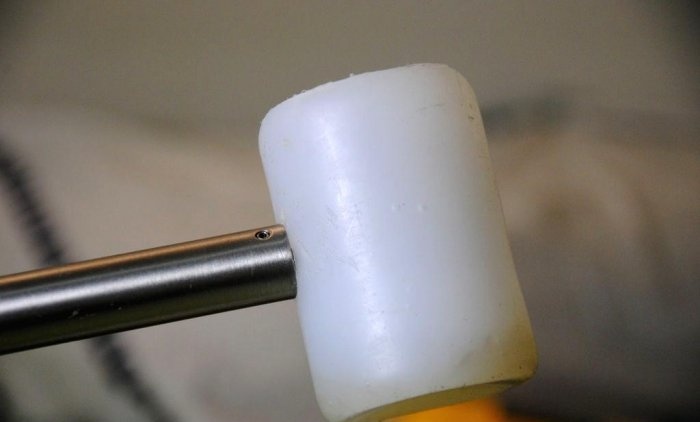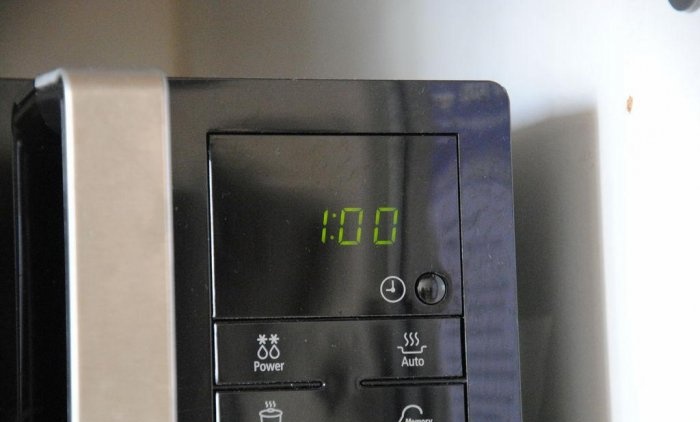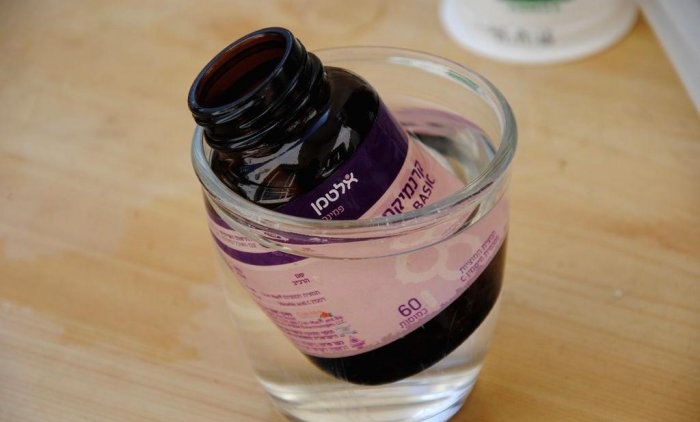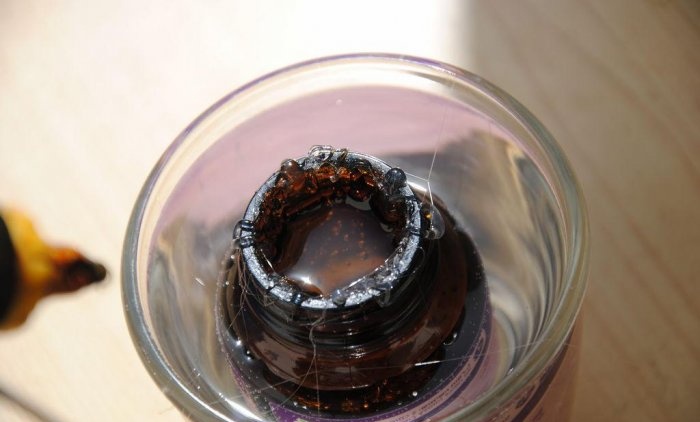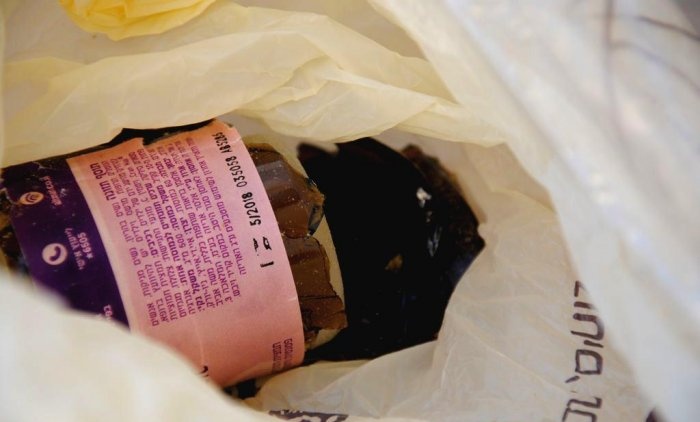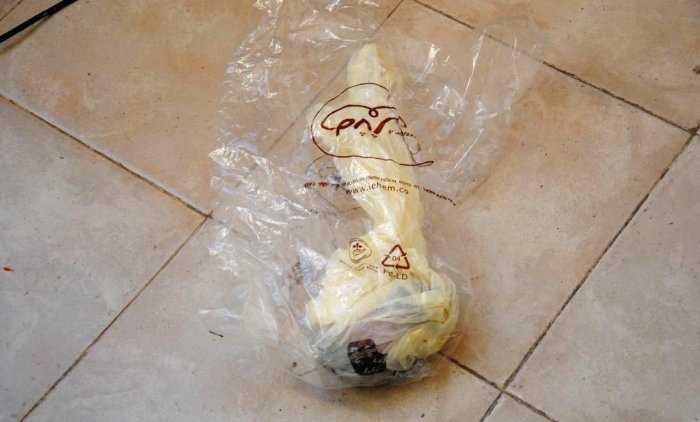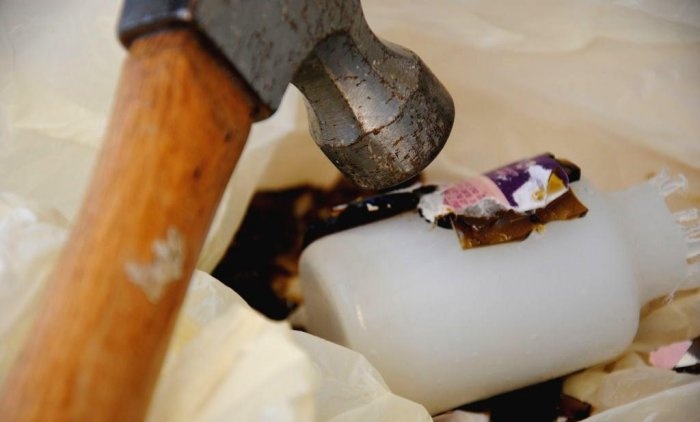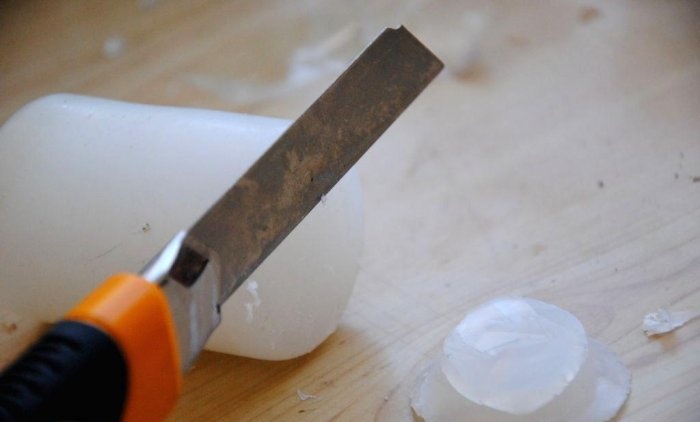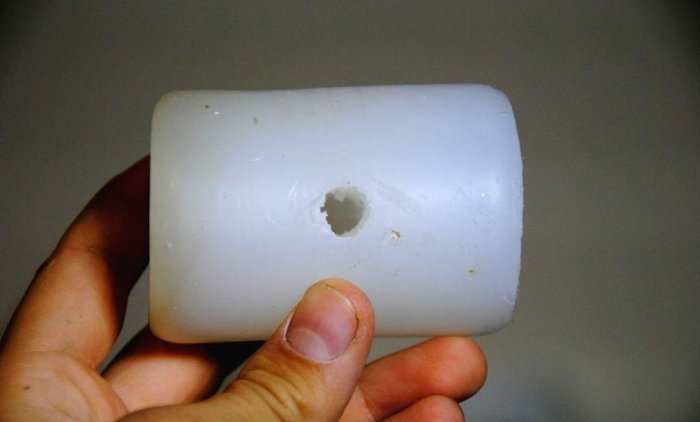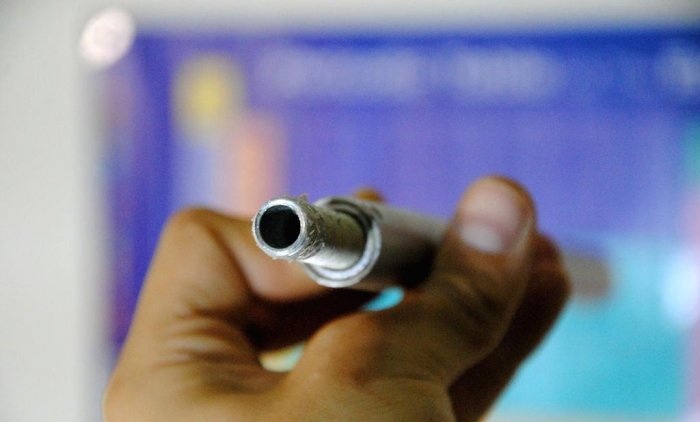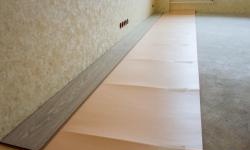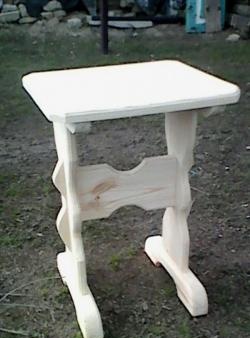How to make a hammer from hot glue
Some materials require particularly delicate and careful handling when working with them. In such cases, a rubber-headed hammer or a wooden mallet is better suited. Without them, repair work is often impossible or difficult. They are used when laying laminate, parquet boards or ceramic tiles.
Stone and roofing work, installing glazing beads on windows and even straightening car cladding parts proceeds faster and with better quality if you use a hammer with an elastic head.
We will need a variety of products, but in small quantities, which cost practically nothing or are available in almost every home.
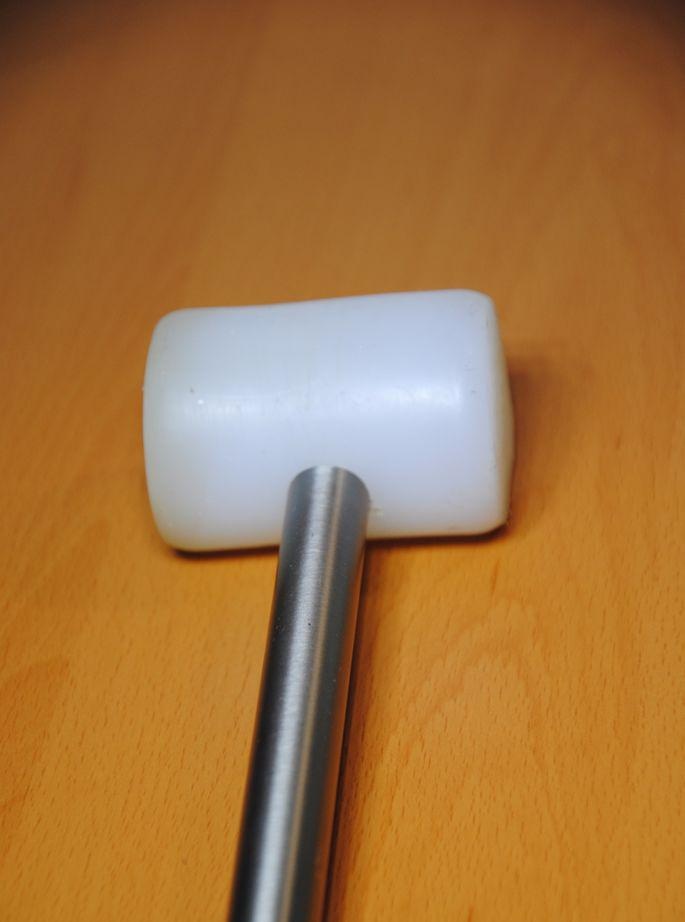
Materials:
Tools:
Also, in the process of work, we may need the functions of a microwave oven and a household refrigerator. And since you will have to deal with heated substances, it is necessary to use protective gloves and goggles, and provide ventilation for the work area.
1. Heat water in a glass cup in the microwave to 100 degrees Celsius.
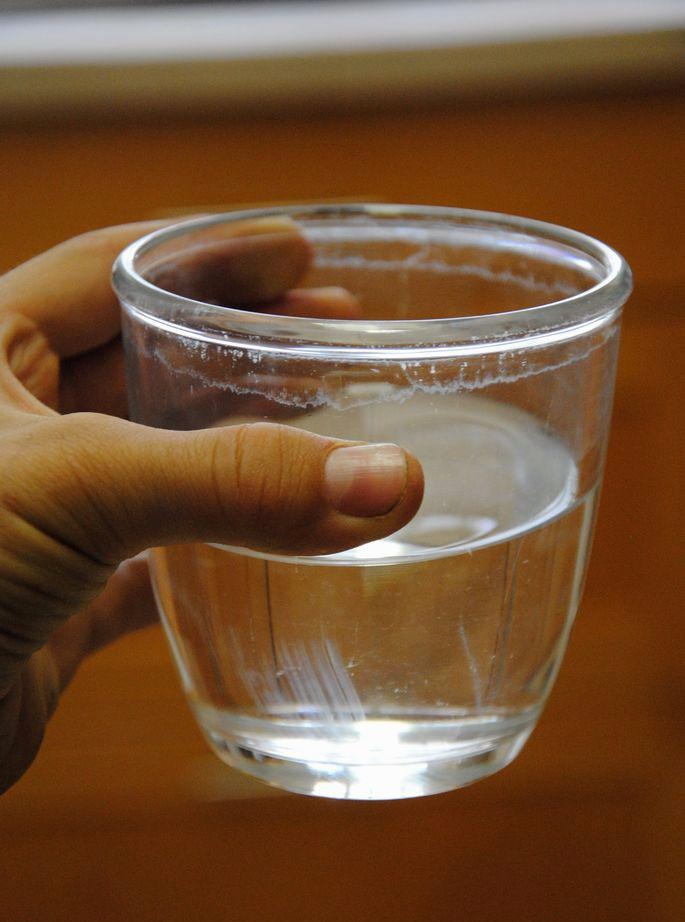
Pour boiling water from an electric kettle and carefully immerse the glass container in it so that it does not crack.
At the next stage, pour molten glue into it, which will slowly cool along with the water in the cup.
2. Using a gun, fill the container with molten hot glue, making sure that no water from the cup gets into the glue bottle as it is filled and immersed in water.
3. Let the glue in the bottle, immersed in a cup of water, cool in the open air for 1 hour. After this time, the system will still be warm. Now we place the glue in the bottle in the refrigerator and leave it there until it cools completely and, accordingly, the glue hardens.
4. When the glue in the bottle has completely hardened, take it out of the refrigerator, wrap it in plastic bags and carefully break the bottle, for example, throwing it on the tiled floor.
5. When at least one crack appears on the bottle, its further destruction can be continued with careful and precise blows of the hammer.
Then we remove the fragments from the surface of the hardened glue with hands wearing protective gloves.
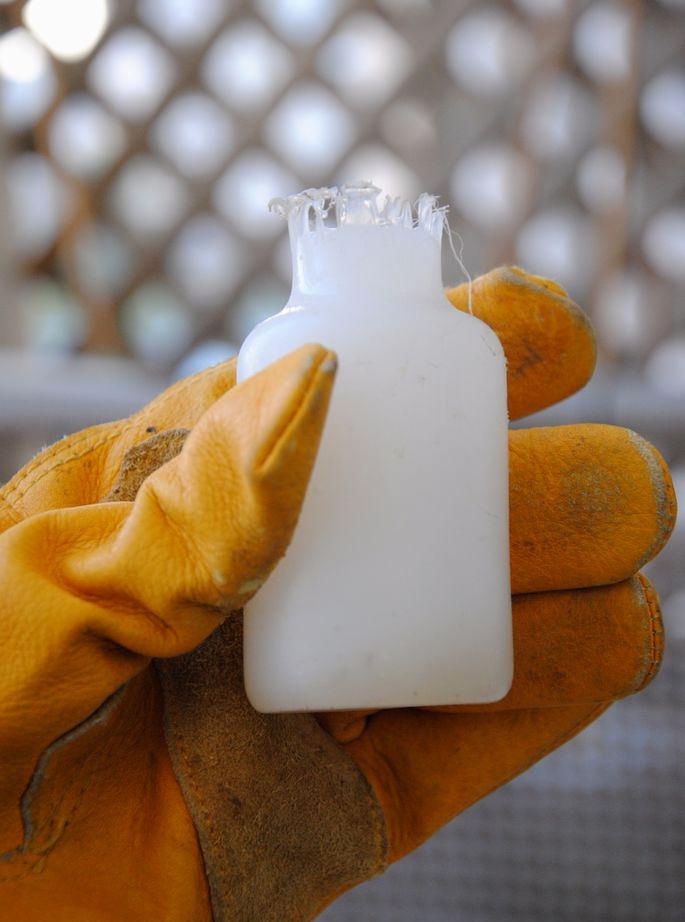
6. Having removed all visible glass fragments, wash the surface of the hardened glue several times with soapy water and rinse, removing dirt and small invisible glass particles. Then we wipe dry the volume formed by the hardened thermoplastic glue.
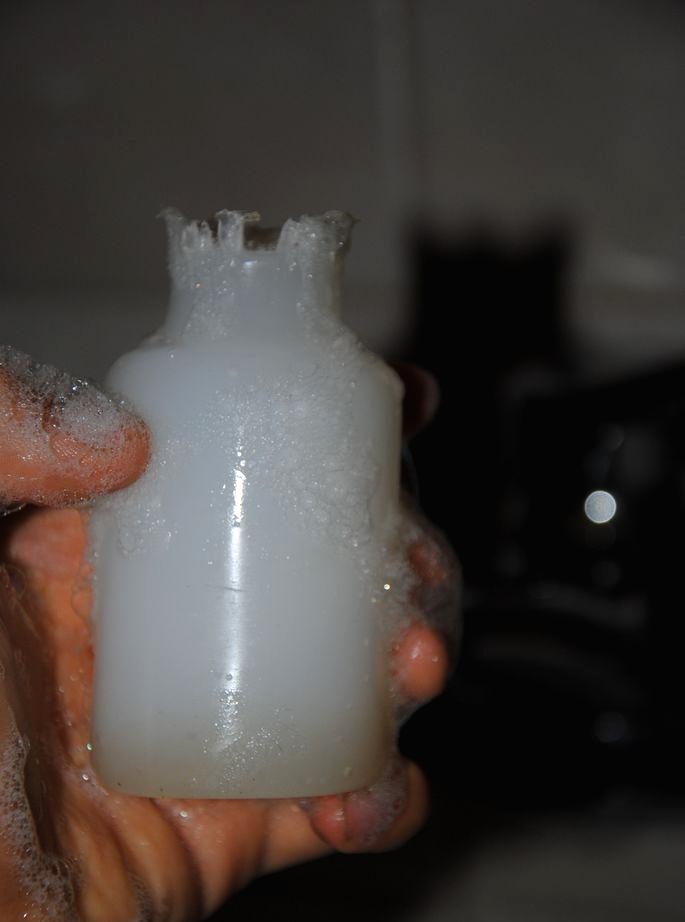
7.Using a knife, saw or string, cut off the part formed by the neck of the bottle from the main body of hardened glue. You should not mix different types (colors) of thermoplastic rods to form the mallet head.
8. We clamp the hardened and completely cleaned form into a homemade wooden vice and, using a drill bit attached to a drill or drilling machine, make a hole in its center, the depth of which is 75% of the diameter of the glue hammer head.
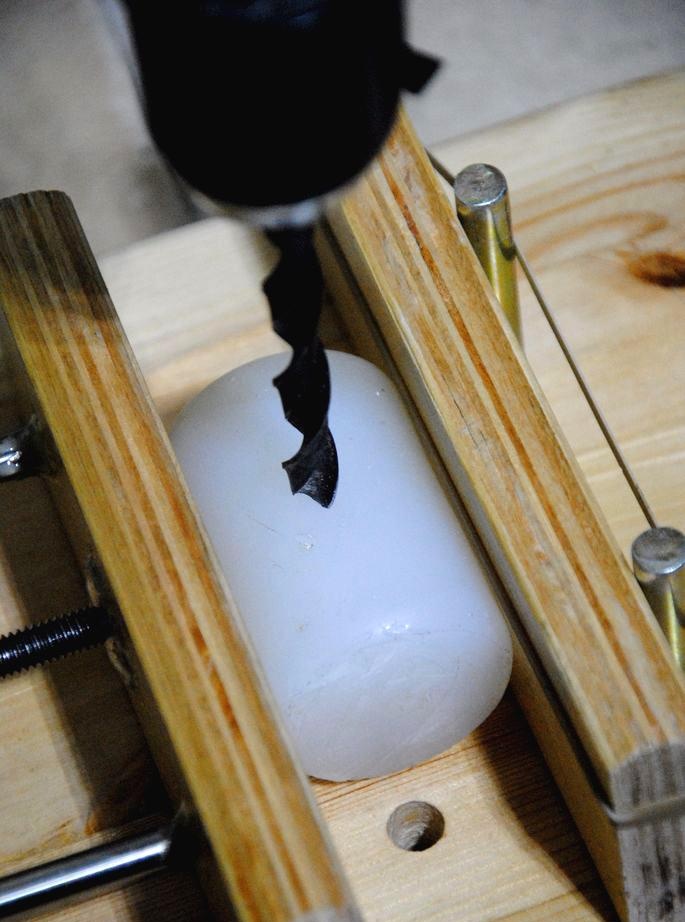
We screw a steel or wooden rod into it with a thread at the end, which acts as a handle.
Our glue hammer is ready to use and its performance is as good as a rubber-headed hammer or a wooden mallet.
When performing carpentry work, a rubber or wooden mallet is often used along with other common tools. So, using a rubber or wooden striker, you can extend the safety and performance of tools such as a chisel or chisel.
A rubber hammer or wooden mallet can be purchased in a store by spending some money (from 250 rubles). But it is possible to make this tool from thermoplastic glue, having basic skills in handling hot water, heated glue and simple tools and equipment.

Original article in English
Stone and roofing work, installing glazing beads on windows and even straightening car cladding parts proceeds faster and with better quality if you use a hammer with an elastic head.
Tools required for work
We will need a variety of products, but in small quantities, which cost practically nothing or are available in almost every home.

Materials:
- thermoplastic glue rods with a diameter of 11 mm and a length of 300 mm - 4 pcs.;
- clean water – 200 ml;
- a steel or wooden rod with a thread at one end;
- glass container of the required volume;
- laundry soap;
- plastic bags – 2 pcs.
Tools:
- hot glue gun;
- homemade wooden vice;
- drill 10 mm;
- knife or other suitable cutting device;
- glass cup;
- hammer;
- drill.
Also, in the process of work, we may need the functions of a microwave oven and a household refrigerator. And since you will have to deal with heated substances, it is necessary to use protective gloves and goggles, and provide ventilation for the work area.
Making a hammer from thermoplastic glue
1. Heat water in a glass cup in the microwave to 100 degrees Celsius.

Pour boiling water from an electric kettle and carefully immerse the glass container in it so that it does not crack.
At the next stage, pour molten glue into it, which will slowly cool along with the water in the cup.
2. Using a gun, fill the container with molten hot glue, making sure that no water from the cup gets into the glue bottle as it is filled and immersed in water.
3. Let the glue in the bottle, immersed in a cup of water, cool in the open air for 1 hour. After this time, the system will still be warm. Now we place the glue in the bottle in the refrigerator and leave it there until it cools completely and, accordingly, the glue hardens.
4. When the glue in the bottle has completely hardened, take it out of the refrigerator, wrap it in plastic bags and carefully break the bottle, for example, throwing it on the tiled floor.
5. When at least one crack appears on the bottle, its further destruction can be continued with careful and precise blows of the hammer.
Then we remove the fragments from the surface of the hardened glue with hands wearing protective gloves.

6. Having removed all visible glass fragments, wash the surface of the hardened glue several times with soapy water and rinse, removing dirt and small invisible glass particles. Then we wipe dry the volume formed by the hardened thermoplastic glue.

7.Using a knife, saw or string, cut off the part formed by the neck of the bottle from the main body of hardened glue. You should not mix different types (colors) of thermoplastic rods to form the mallet head.
8. We clamp the hardened and completely cleaned form into a homemade wooden vice and, using a drill bit attached to a drill or drilling machine, make a hole in its center, the depth of which is 75% of the diameter of the glue hammer head.

We screw a steel or wooden rod into it with a thread at the end, which acts as a handle.
Our glue hammer is ready to use and its performance is as good as a rubber-headed hammer or a wooden mallet.
When performing carpentry work, a rubber or wooden mallet is often used along with other common tools. So, using a rubber or wooden striker, you can extend the safety and performance of tools such as a chisel or chisel.
A rubber hammer or wooden mallet can be purchased in a store by spending some money (from 250 rubles). But it is possible to make this tool from thermoplastic glue, having basic skills in handling hot water, heated glue and simple tools and equipment.

Original article in English
Similar master classes
Particularly interesting
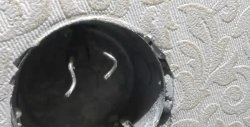
How to install a socket if there are short wires left
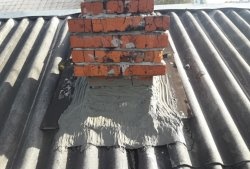
How to eliminate gaps between the chimney and slate
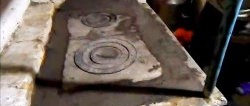
How to mix an ultra-reliable solution for the oven that does not give
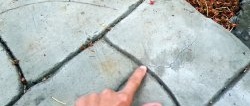
There will be no more cracks: What to add to concrete to make it
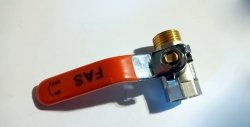
Never buy ball valves without checking with me
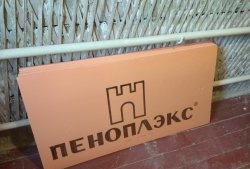
New technology for floor insulation with penoplex
Comments (4)

